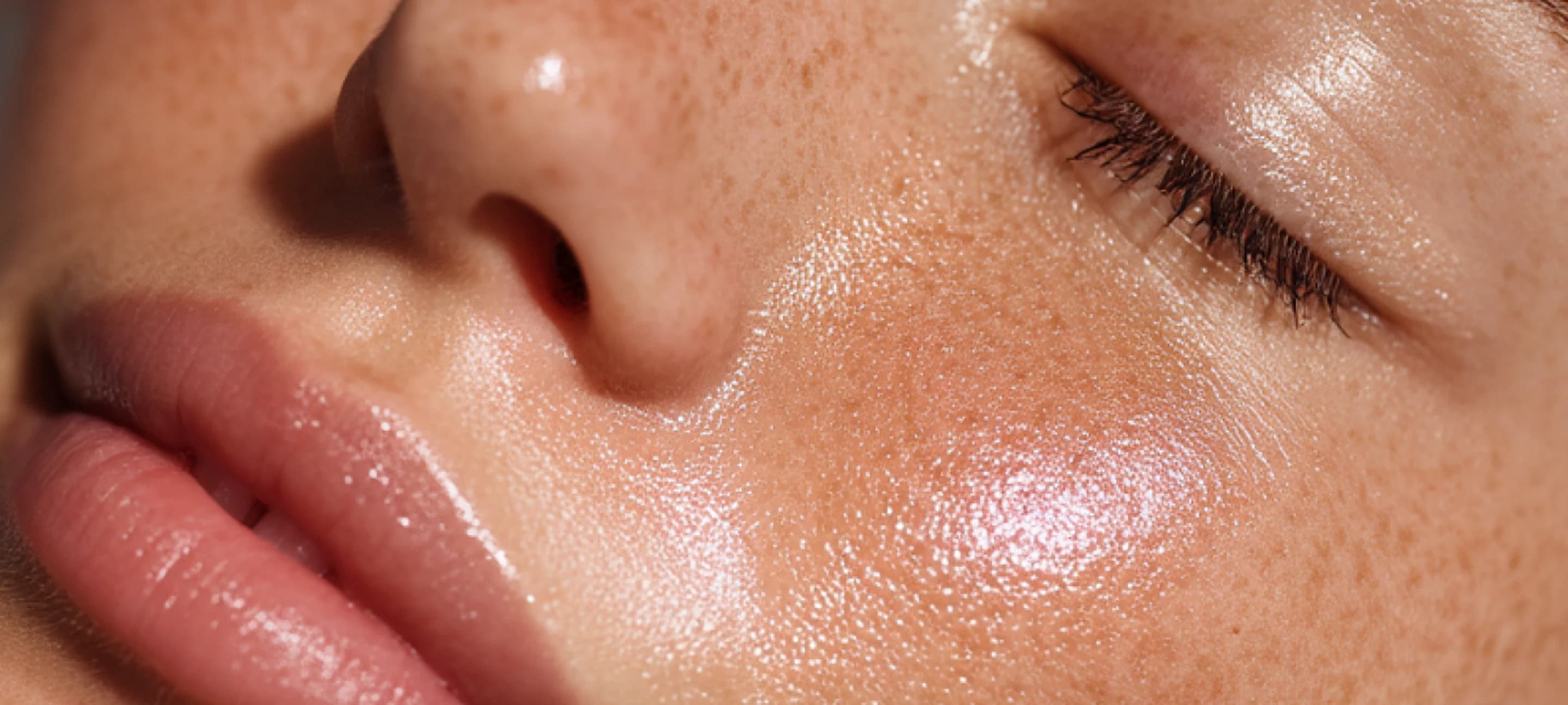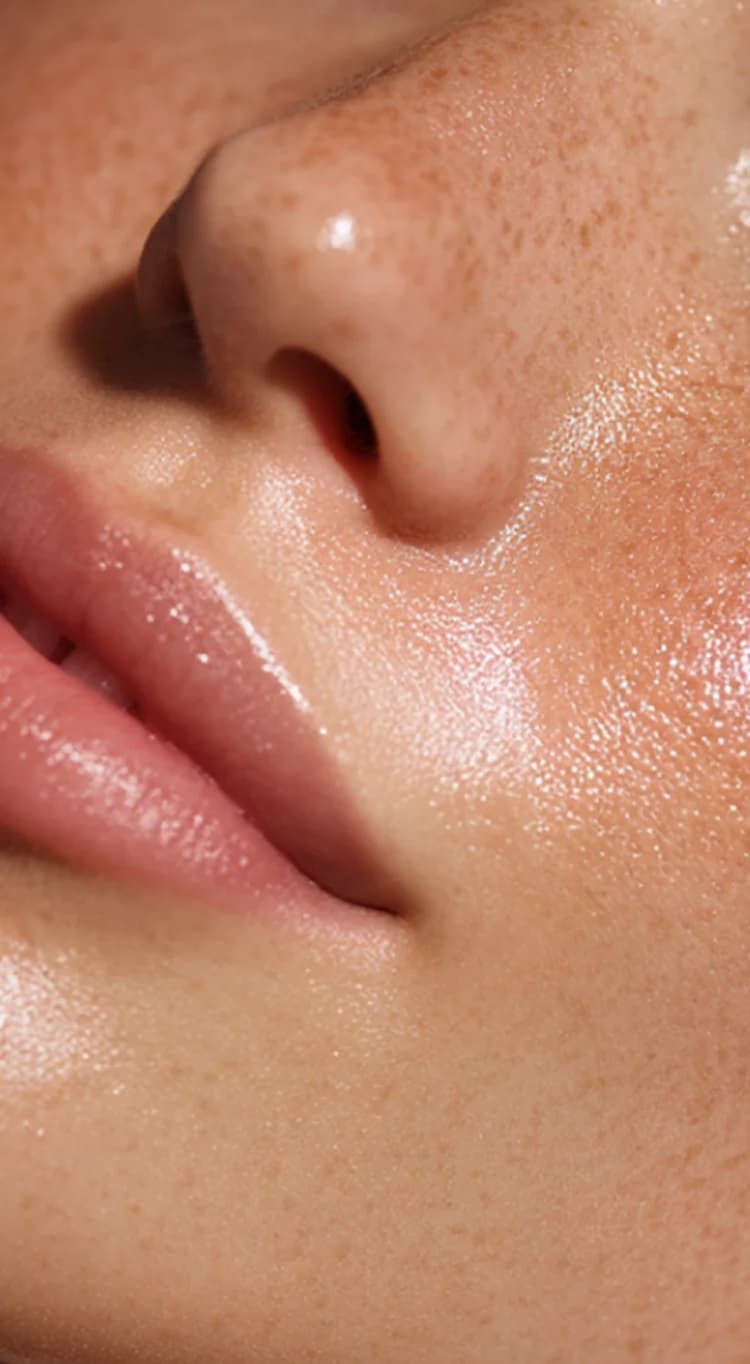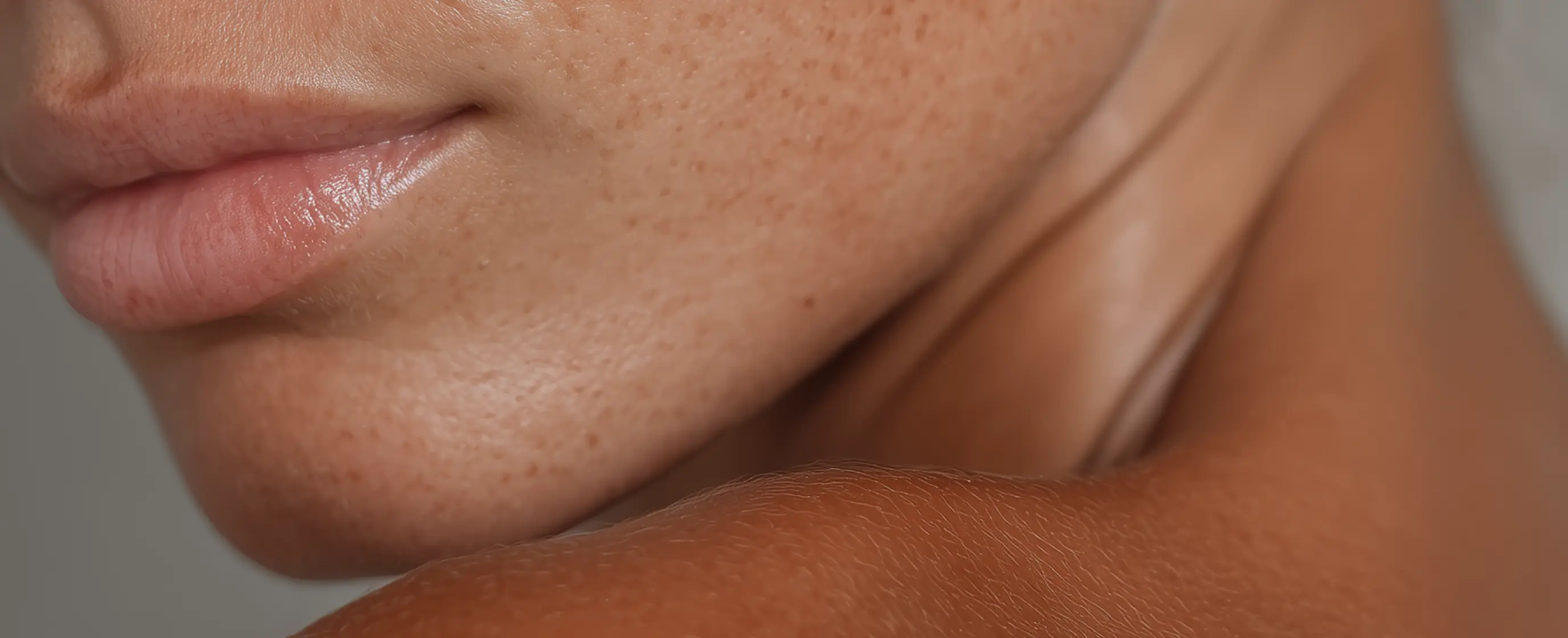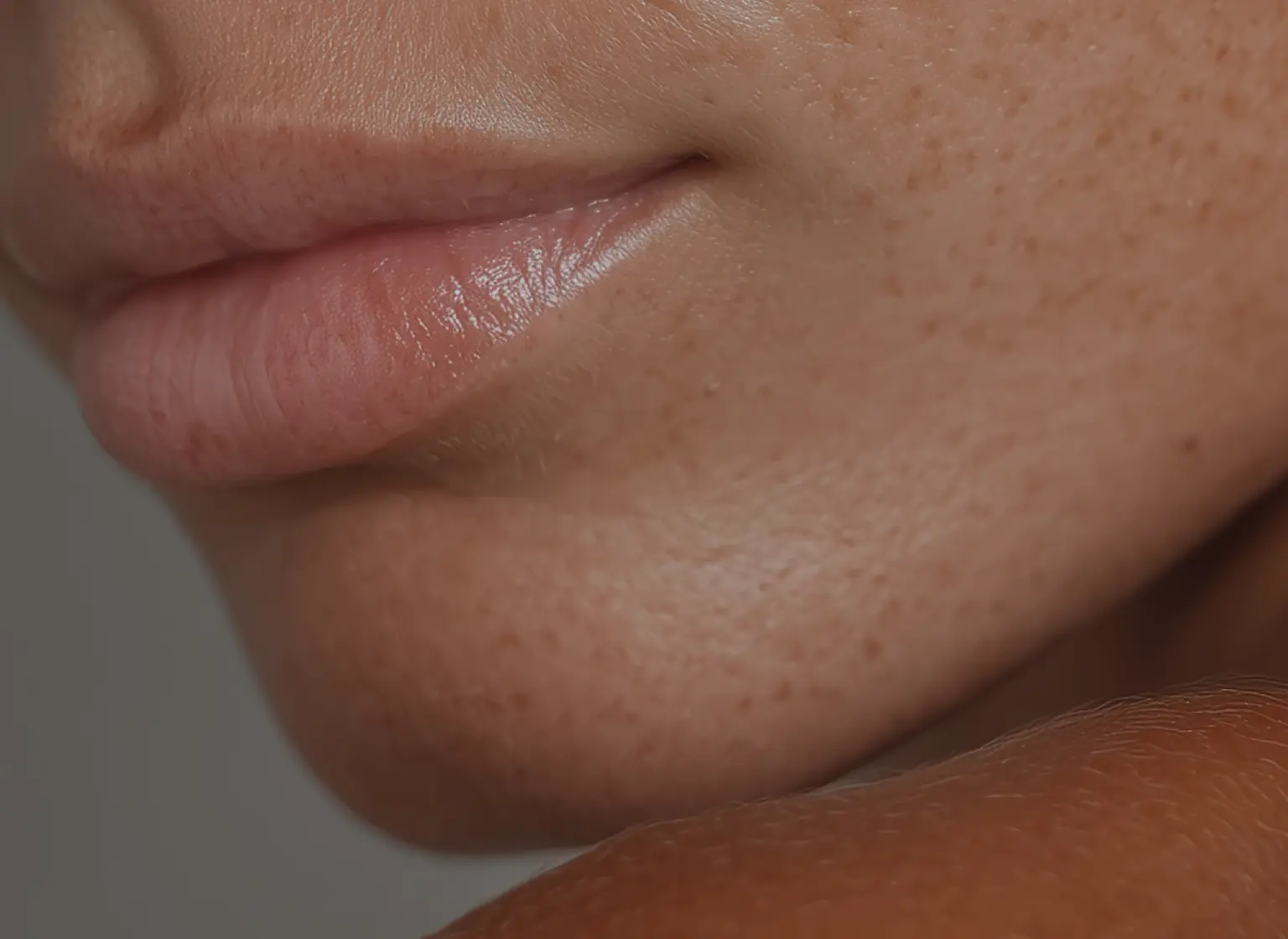WHAT IS RF SKIN TIGHTENING?
RF (Radiofrequency) skin tightening uses controlled heat energy to penetrate deep layers of skin, stimulating collagen and elastin production. The heat causes immediate collagen contraction and long-term remodeling, resulting in firmer, tighter skin. It's effective for treating mild to moderate laxity on the face, neck, and body without surgery or needles.
COMMON TREATMENT AREAS:
- Face and jawline
- Neck and décolletage
- Abdomen and flanks
- Arms and thighs
- Buttocks
- Any area with mild to moderate skin laxity
RF Skin Tightening treatments available on marbl
What to Expect
A qualified practitioner uses a handheld device that delivers radiofrequency energy to the deeper skin layers. The controlled heat causes collagen fibres to contract immediately while triggering new collagen production over time. Skin gradually becomes firmer, tighter, and more lifted as the remodeling process continues.
Treatment time
45–90 minutesPain level
mild to moderate — described as warm or hot but co...Downtime
minimal; mild redness or swelling for 24–48 hoursWhen results appear
4–6 weeksFull results
3–6 monthsLongevity
6–12 months with maintenanceLook and feel
firmer tighter skin with improved cIS IT RIGHT FOR ME?
THIS TREATMENT MAY BE SUITABLE IF:
- You have mild to moderate skin laxity
- You want to tighten and lift without surgery
- You're looking for gradual natural-looking results
- You prefer a treatment with zero downtime
Pre-Care & Aftercare
BEFORE YOUR APPOINTMENT
- Stay well hydrated
- Avoid sun exposure and tanning for at least 2 weeks
- Arrive with clean skin free of lotions or oils
- Shave treatment areas if needed
AFTER YOUR APPOINTMENT
- Resume normal activities immediately
- Mild redness or warmth is normal and fades quickly
- Stay hydrated to support collagen production
- Avoid sun exposure and wear SPF if treating exposed areas
- A series of 4–6 treatments is typically recommended with maintenance every 6–12 months
top clinics to get RF Skin Tightening in your area
reviews
I’ve been seeing Sally for some time now for her radio frequency skin tightening facials. I’m absolutely delighted by the results. My skin is glowing, everything has lifted and tightened and my lines are less pronounced. I would highly recommend this treatment to anyone. Sally is extremely professional, her knowledge of skin and its related problems is second to none and she has the highest level of training with a medical background behind her. I wouldn’t trust anyone else with my skin!
Rachel Marston
I really loved my Radio Frequency facial with Amanda. I usually stick to a more basic facial but thought I would try this for a change. It was so relaxing and it just felt warm on my skin. Amanda explained how it was for boosting the collagen and plumping the skin. Amanda is lovely, professional, warm and friendly and I felt perfectly safe in her hands. When I got home, my daughter said how amazing I looked. She said I was glowing and my skin looked incredible and that I looked like I had had Botox and my wrinkles had gone!! so wow wow wow thank you!!
Sarah Smith
Such a lovely place, Amanda is a top class Facialist who really knows skin. From my first appointment where she performed a thorough investigation of my skincare routine and planning my treatments (RF facials) to my ongoing experience, it has been nothing but a pleasure. The clinic is modern, clean and calm and I really enjoy my visits. The ongoing support in answering my questions is also appreciated! Highly recommend.
Suzie B
I purchased a whole course of radio-frequency skin tightening treatments and facial peelings. Just had my second appointment here and loved every bit of my treatment with Eileen. The service was great, the atmosphere was warm and welcoming, the ambience was very pretty and elegant. Each time I leave with glowing skin and a pleasant experience. Eileen is wonderful and the treatment is extremely relaxing! I can’t wait to come back. Highly recommend!
Eva Travnickova
I have been having regular Radio Frequency treatments and mesotherapy with Julia and my skin has become tighter and brighter and looking the best it’s been in a long time! Julia is a true professional and has been extremely helpful in recommending the right treatment for me. I would highly recommend JK Aesthetics
Chrissie O'carroll
Purva at innova laser clinic has provided a brilliant service with radio frequency facial. My skin is smooth, looks and feel fresh. Will definitely recommended this and Inoova laser clinic.
Huma Qureshi
I highly recommend Cambridge Skin Clinic! The radiofrequency treatment is relaxing, and after just two sessions, I can already feel my skin tightening and lifting. I even slept better after each treatment! Dr Li, who is medically trained and still works with the NHS, is highly skilled and very friendly. I have complete confidence in her expertise. The Clinic is very convenient located too.
Ting Zhang
I have experienced a really positive change in my neck after my RF treatment. Others have noticed the difference and I'm absolutely delighted with it! It was a lovely experience from start to finish, and I can wholeheartedly recommend it.
Colette Isaaks
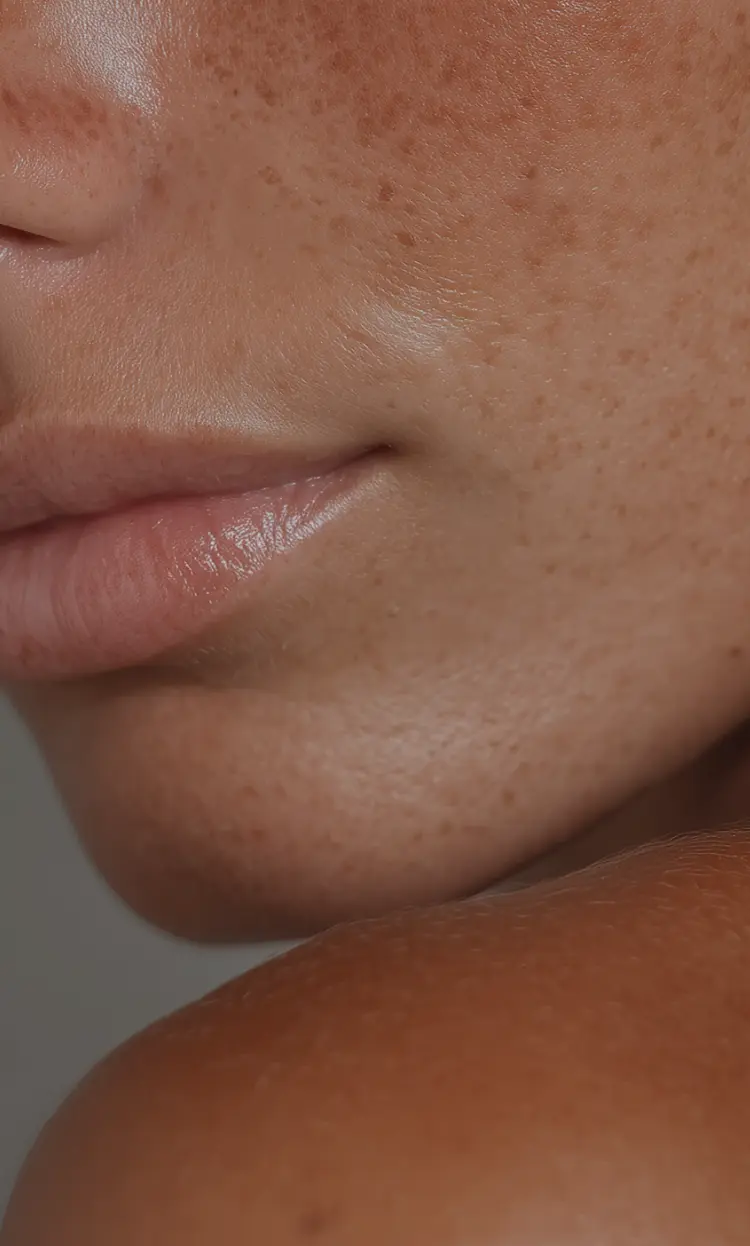
Not sure if RF Skin Tightening are right for you?
Answer a few quick questions to discover treatments tailored to your goals.
FAQs
RF (radiofrequency) skin tightening can be effective for mild to moderate skin laxity when performed correctly with appropriate devices by trained practitioners. The treatment works by delivering controlled heat deep into the skin, which stimulates collagen production and causes immediate collagen fiber contraction, leading to gradual tightening and firming over several months. Clinical studies and patient experiences show that RF treatments can produce noticeable improvements in skin firmness, texture and mild sagging. However, effectiveness varies significantly depending on several factors: the severity of skin laxity, with mild to moderate cases responding better than severe sagging; the specific RF technology and device used, as quality and power vary considerably; your age and natural collagen production capacity; skin thickness and elasticity; the treatment area, with face and neck often showing better results than body; the number of sessions completed; and realistic expectations about outcomes. RF skin tightening works best for early signs of ageing, mild jowls, slight neck laxity, skin texture improvement and preventative maintenance. It cannot address significant sagging, excess skin or severe wrinkles that would require surgical intervention. Results are subtle to moderate rather than dramatic, developing gradually over 3 to 6 months as collagen remodelling occurs. For appropriate candidates with realistic expectations, RF skin tightening can provide worthwhile improvement, though it should be viewed as enhancement rather than transformation.
RF (radiofrequency) skin tightening is a non-invasive cosmetic treatment that uses radiofrequency energy to heat the deeper layers of skin, stimulating collagen production and causing tissue contraction to improve skin firmness and reduce mild to moderate sagging. The treatment works by delivering controlled electromagnetic energy through the skin's surface, which heats the dermis and underlying tissue to specific therapeutic temperatures, typically between 40-45 degrees Celsius. This controlled heating triggers several beneficial processes: immediate contraction of existing collagen fibers, creating an instant tightening effect; stimulation of fibroblasts to produce new collagen and elastin over the following months; and remodelling of the skin's structural proteins, leading to improved firmness and texture. RF skin tightening can be used on various areas including the face, neck, jowls, abdomen, arms, thighs and other body areas showing mild skin laxity. Different RF technologies exist including monopolar, bipolar and multipolar systems, which vary in how they deliver energy and the depth of penetration. Treatments typically take 30 to 90 minutes depending on the area treated, cause minimal discomfort with most people experiencing a warm or hot sensation, and require no downtime, allowing immediate return to normal activities. Results develop gradually over 3 to 6 months as new collagen forms, and multiple sessions are usually needed for optimal improvement.
RF tightens skin through a two-phase process involving immediate and long-term effects. During treatment, the RF device delivers radiofrequency energy into the skin, creating controlled heat in the deeper dermal layers while keeping the surface cool and protected. This deep heating causes immediate contraction of existing collagen fibers, which are made of proteins that shrink and tighten when heated, similar to how meat contracts when cooked. This provides an instant tightening effect, though subtle. The more significant and lasting results occur through the healing response: the controlled thermal injury triggers the body's natural wound healing process; fibroblasts, the cells responsible for producing collagen and elastin, are activated and stimulated; over the following weeks and months, these cells produce new collagen and elastin proteins; the new collagen gradually remodels the skin's underlying structure, creating improved firmness, elasticity and support; and tissue remodelling continues for 3 to 6 months after treatment, with gradual visible tightening as the new structural proteins develop. The degree of tightening depends on reaching therapeutic temperatures in the target tissue without damaging the surface, which requires precise control and appropriate device technology. Different RF technologies penetrate to different depths and distribute energy in various patterns, affecting treatment outcomes. The skin's natural ageing process continues after treatment, so results are not permanent, typically lasting 1 to 2 years before maintenance treatments are needed. RF skin tightening essentially harnesses the body's natural healing and regenerative processes to improve skin structure from within.
The effectiveness of RF skin tightening ranges from modest to moderate for appropriate candidates, with realistic expectations being crucial for satisfaction. Clinical studies show that RF treatments can produce measurable improvements in skin laxity, firmness and texture, with many patients reporting visible tightening and smoother skin after a course of treatments. However, the degree of improvement is generally subtle to moderate rather than dramatic. RF skin tightening is most effective for people with mild to moderate skin laxity who want gradual, natural-looking improvement; early signs of ageing in the 30s to 50s age range; good skin quality and thickness, as very thin or severely sun-damaged skin may respond poorly; realistic expectations about gradual, subtle results rather than dramatic transformation; and specific concerns like mild jowls, slight neck laxity, skin texture issues or preventative maintenance. RF is less effective or ineffective for significant skin sagging or excess that would require surgical lifting; very advanced ageing with poor skin quality; expectations of facelift-level results; and severe wrinkles or very loose skin. Effectiveness also depends heavily on the specific RF device and technology used, with medical-grade devices generally producing better results than at-home or beauty salon devices; the skill and experience of the practitioner; completing the full recommended treatment course, typically 4 to 6 sessions; and maintaining results with good skincare, sun protection and healthy lifestyle. Some people see noticeable improvement that they find worthwhile, while others may see only minimal change. Combining RF with other treatments like microneedling (RF microneedling), dermal fillers or other modalities may enhance results. A thorough consultation with an experienced practitioner can help determine whether RF skin tightening is likely to be effective for your specific concerns and anatomy.
Most people require 4 to 6 RF skin tightening sessions for optimal results, though the exact number varies depending on several factors. Treatment sessions are typically spaced 1 to 4 weeks apart, depending on the specific device, protocol and practitioner's recommendation. The number of sessions needed depends on your age and severity of skin laxity, with younger patients or those with milder concerns sometimes achieving satisfactory results with fewer sessions; the treatment area, with face and neck often requiring 4 to 6 sessions, while body areas like abdomen or arms may need 6 to 8 or more; your treatment goals and desired degree of improvement; your skin's response to treatment, which varies between individuals; the specific RF technology used, as some newer or more powerful devices may require fewer sessions; and your practitioner's assessment and protocol. Some practitioners offer package deals for a series of treatments, typically 4 to 6 sessions. After the initial treatment series, results continue to develop for 3 to 6 months as collagen production peaks. Maintenance sessions are then recommended to sustain results, typically every 6 to 12 months, as the natural ageing process continues and collagen gradually breaks down over time. Single sessions typically provide minimal visible improvement, which is why a course of treatments is necessary for meaningful results. Some very advanced RF systems claim visible results with fewer sessions, potentially 1 to 3 treatments, but these are generally more expensive per session and may use more intensive protocols. Your practitioner should evaluate your individual needs during consultation and recommend a personalised treatment plan with an appropriate number of sessions to achieve your goals. Consistency and completing the full treatment course are important for optimal outcomes.
Yes, RF microneedling can effectively tighten skin and is generally considered more effective than RF or microneedling alone. RF microneedling, also known as fractional RF or microneedling with radiofrequency, combines two technologies: microneedling, which creates controlled micro-injuries with fine needles; and radiofrequency energy, which is delivered directly into the dermis through the needles. This combination approach offers several advantages: the needles allow RF energy to be delivered precisely at optimal depths in the skin, bypassing the surface and minimising discomfort; the combination of mechanical injury from needles plus thermal injury from RF creates a more robust healing response and collagen stimulation; and RF microneedling can treat multiple concerns simultaneously including skin tightening, texture improvement, scarring and pigmentation. Popular RF microneedling devices include Morpheus8, Profound RF, Secret RF and others. Clinical evidence shows that RF microneedling can produce significant skin tightening, particularly for mild to moderate laxity on the face, neck and body. The treatment is more intensive than traditional RF, typically involving more discomfort during treatment and longer recovery time with several days of redness, swelling and possible pinpoint bleeding. Most people need 1 to 3 RF microneedling sessions spaced 4 to 6 weeks apart, with results developing over 3 to 6 months. RF microneedling generally produces more noticeable tightening than traditional RF, though it comes with higher cost, more downtime and increased discomfort. For people seeking more significant improvement than traditional RF can provide but who are not ready for surgery, RF microneedling represents a middle ground option with meaningful tightening capability.
RF skin tightening is generally tolerable rather than painful for most people, though comfort levels vary depending on the device used, treatment area, settings and individual pain tolerance. During treatment, you typically experience a warm to hot sensation as the RF energy heats the deeper skin layers. Most people describe the feeling as a hot stone massage, intense warmth, brief hot pulses or heating that builds as the device passes over areas multiple times. The sensation is usually more intense on bony areas, thinner skin or sensitive regions like the neck, while fleshier areas like cheeks may be more comfortable. Most RF devices have built-in cooling systems that cool the skin surface before, during or after RF pulses to minimise discomfort and protect the surface. This cooling creates alternating sensations of heat and cold that most people find bearable. Some protocols use topical numbing cream applied before treatment for more sensitive patients or intensive treatments, though this is not always necessary for standard RF sessions. Pain levels also depend on the specific device type, with some technologies being more comfortable than others; treatment intensity and settings, with higher energy levels causing more discomfort; the practitioner's technique and how they manage patient comfort; and your individual sensitivity. After treatment, the treated area typically feels warm, slightly tender or sensitive for a few hours, similar to mild sunburn, but this usually resolves quickly. There is generally no significant pain after RF treatments. If you experience excessive pain during treatment, inform your practitioner immediately so they can adjust settings or technique. Most people find RF skin tightening quite tolerable, especially compared to more intensive treatments like certain laser procedures or RF microneedling.
RF skin tightening can work on the stomach for mild skin laxity, but results are generally more modest than on the face and effectiveness depends heavily on realistic expectations and the degree of skin looseness. The stomach area presents unique challenges compared to facial treatments: the skin and tissue are thicker, requiring deeper RF penetration; there is often more skin laxity to address; stretch marks and previous weight changes affect skin quality; and abdominal skin has less natural elasticity than facial skin. RF skin tightening can be effective for the stomach in certain situations: mild skin looseness after modest weight loss, where skin quality is still reasonable; slight laxity after pregnancy in people with good skin elasticity; skin texture improvement and tightening as part of body contouring maintenance; and preventative treatment for maintaining firmness. RF is less effective or not suitable for significant loose skin after major weight loss or multiple pregnancies; stretched, damaged skin with poor elasticity; expectations of dramatic tummy tuck-level results; or large amounts of excess skin. For stomach treatments, more sessions are typically needed than for facial treatments, often 6 to 10 sessions for noticeable improvement. Results are subtle and gradual, developing over several months. RF stomach treatments work best when combined with healthy lifestyle, exercise and stable weight, and are sometimes combined with other body contouring treatments for enhanced results. Technology matters significantly - medical-grade RF devices designed for body treatments are more likely to produce results than less powerful machines. For people with significant abdominal skin laxity, surgical abdominoplasty (tummy tuck) remains the most effective option. A consultation with an experienced practitioner who can honestly assess your abdominal skin and advise whether RF is likely to provide worthwhile improvement is essential before investing in stomach RF treatments.
Before RF skin tightening, people typically have mild to moderate skin laxity showing as early jowls, slight loss of jawline definition, mild neck sagging or crepey texture, loss of firmness in cheeks or under-eyes, fine lines and wrinkles, rough or uneven skin texture, or body areas like stomach or arms with slight looseness. The skin may appear less firm, somewhat saggy or aged, lacking the taut, smooth quality of youthful skin. After completing a full course of RF skin tightening treatments, typically 4 to 6 sessions over several months, and allowing time for collagen remodelling (3 to 6 months after the final session), most people with appropriate concerns experience subtle to moderate improvements. The skin typically appears firmer, tighter and more toned; mild jowls may be less pronounced with improved jawline definition; the neck may show better contour with reduced crepiness; skin texture generally looks smoother and more refined; fine lines may appear softer; and there is often an overall more youthful, refreshed appearance. The degree of improvement varies considerably depending on starting severity, age, skin quality, the device and technology used, the number of sessions completed and individual response to treatment. Results are generally natural-looking and gradual rather than dramatic transformation. Some people achieve noticeable improvement that they find worthwhile, while others may see only minimal change or be disappointed if expectations were unrealistic. It is crucial to understand that RF skin tightening provides subtle enhancement rather than surgical-level lifting. Immediately after each treatment, there may be mild redness or warmth that resolves within hours, but typically no significant visible changes until weeks later as collagen develops. The most dramatic results are usually seen 3 to 6 months after completing the treatment series when collagen production peaks. Results typically last 1 to 2 years before maintenance treatments are needed, as natural ageing continues. Your practitioner should provide realistic before and after photos from their own work, taken months after treatment completion, showing results on similar concerns and skin types to help set appropriate expectations. The best candidates for satisfying results are those with mild concerns seeking subtle improvement, not those expecting dramatic transformation. RF skin tightening can be a worthwhile investment for appropriate candidates with realistic expectations, but thorough consultation and honest assessment of your suitability are essential.
